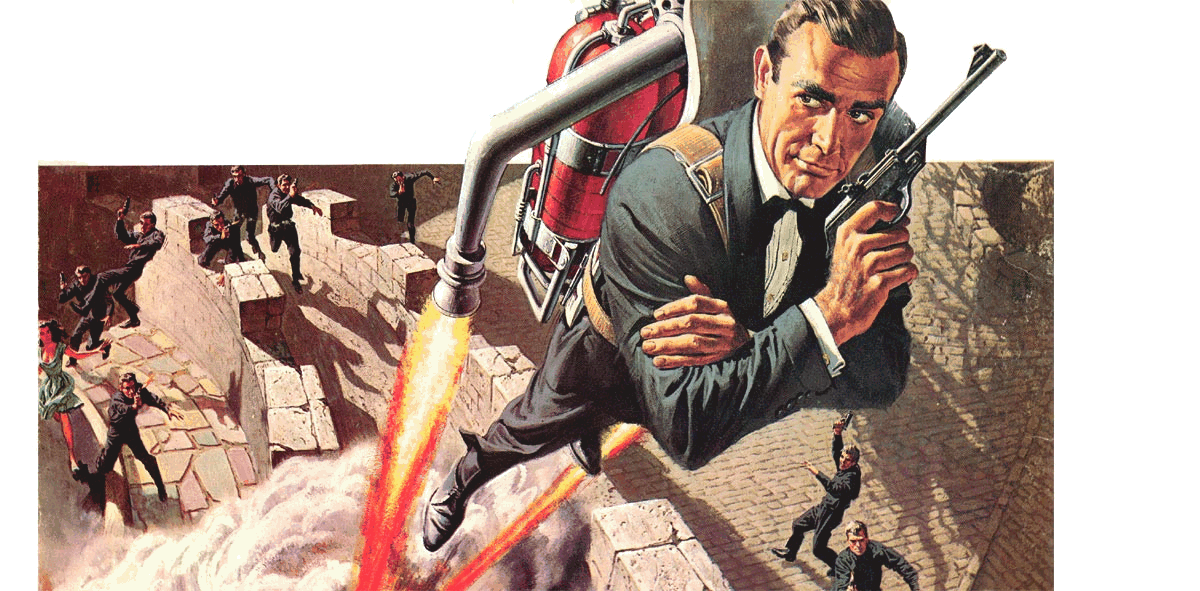
By Mike Sparks
 www.youtube.com/watch?v=THEcWrznicY
www.youtube.com/watch?v=THEcWrznicY
James Bond is For Real
1968. Vietnam.
A marine recon team ("Rush Act") is trapped by the North Vietnamese Army (NVA) and radios for immediate helicopter vertical take-off and landing (VTOL) extraction. The weather is terrible. The pilots are reluctant. The commander of 1st Recon BN, LTC Leftwich will not leave his men out there to die. He hops onboard the aircraft and flies through the monsoon weather to rescue his men by CH-46 SPIE rig extraction.
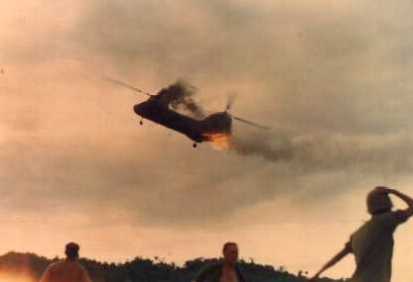
[Marine Corps Gazette, February, 1992, page 12]
There has to be a better way.
THE HELICOPTER EMERGENCY EXTRACTION PARADIGM
As good as this all is, wouldn't it be better to find a better way to extract small units behind enemy lines? The helicopter as a clandestine insertion/extraction platform is flawed by noise, infared signature and slow speeds, the weather can also kill if not sensor equipped. The enemy is alerted and waiting. The U.S. Army Special Forces (SF) special recon team in Northern Iraq that was extracted under enemy fire after being compromised by a little girl illustrates this moral dilemma. We cannot leave our men behind enemy lines, but can we afford to lose a dozen of men dying in an extraction/rescue attempt like we suffered when recovering an officer with nuclear secrets during the Vietnam War (BAT-21)? While we can and should silence helicopters and employ stand-off recoveries using ground vehicles like armored/armed HMMWVs or much better yet, German Wiesel or M113 Mini-Gavin or AmphiGavin tracked AFVs [AKA Light tanks] rolling out the back end of C-130 Combat Talons by airdrop or airland or CH-47D AKA Chinook-type helicopters by VTOL, we need a self-extraction capability by AIR for SF teams to supplement foot, and ground human-powered vehicles (small boats, ATACs, ATBs).
 www.youtube.com/watch?v=-_3gDhaY9sc
www.youtube.com/watch?v=-_3gDhaY9sc
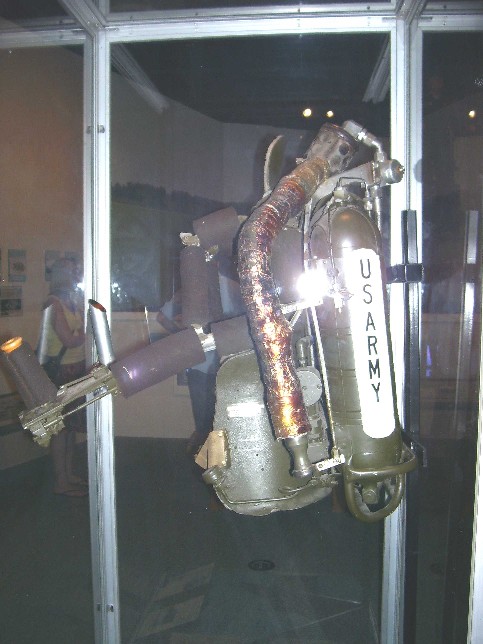
Photos from the author's collection taken at the U.S. Army Transportation Museum at Fort Eustis, Virginia
The pioneering work on jet packs was done by the U.S. ARMY (not the USMC!) in the 1950s/60s lead by Sergeant Bill Suitor who is actually flying the pack in the pre-title teaser sequence in the 1965 movie "Thunderball" starring Sean Connery (see YOUTUBE video clip above the still pictures). Connery has stated many times that while "From Russia with Love" is his favorite 007 movie...and a video game has been made of it with him in it lending his voice and likeness, it also has his favorite gadget in it: THE JET PACK.
The problem is that early jet packs were pure thrust rockets burning up fuel so fast they only had a dangerous 30-60 SECONDS of flight time. To get tactically useful continuous flight we need a more fuel efficient thrust means; which have arrived! Glenn Martin has just unveiled their DUCTED FAN jet pack. It now offers 30 MINUTES of flight time.
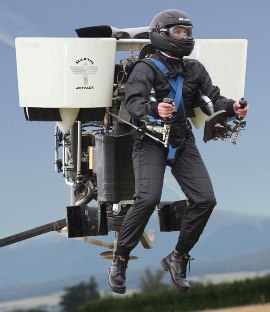
So now all we need to do is combine this ducted fan jet pack unit to a ram-air paragliding parachute and you now have a LONG-RANGE insertion/extraction device--that can take-off vertically for rapid escapes, then deploy its parachute for more lift and range.
 www.youtube.com/view_play_list?p=7007D87DA4AE1140
www.youtube.com/view_play_list?p=7007D87DA4AE1140
2018. Southwest Asia
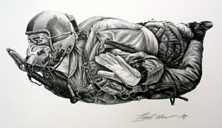
A small team of U.S. Army SF personnel exit a jet transport at high altitude wearing oxygen. They descend to Ram-Air Parachute (RAP) opening altitude and fly into their insertion point quietly.
Cache-ing their "Parajets" at the future Extraction Point (EP), they quickly re-pack their main RAPs back into their containers.
They proceed on foot to their target: a Chemical/Biological weapons plant hidden within a supposedly "peaceful" fertilizer plant. Wearing extremely good camouflage, they reach the target undetected and shine a laser beam directly onto the target. They radio in to a F-117 "Nighthawk" stealth fighter flying overhead to drop its laser-guided bombs.
A pair of hits! The entire area comes to life sirens blaring, weapons fired wildly into the air!
Time to get out of here!
The team runs all the way back to its EP. They can hear enemy armored vehicles and Air Defense Artillery weapons mustering around them expecting a helicopter to appear soon to pick-up American Commandos. They don their Parajets---engines on, they climb out of the area, skimming the treetops. They are well out of danger within minutes.
 www.youtube.com/watch?v=r1zV8WTgAgE
www.youtube.com/watch?v=r1zV8WTgAgE
Sean Connery's Favorite 007 movie and equipment in a video game!
They deploy their reserve RAP and throttle down to conserve fuel for their flight back to friendly lines. Over the base, they lower their Parajets and rucksacks on a lowering line, flare canopies at 20 feet for a soft stand-up landing. The first combat use of jetpacks has been a stunning success.
MANPACK "HARRIER" = JET PACK + RAP + WING SUITS
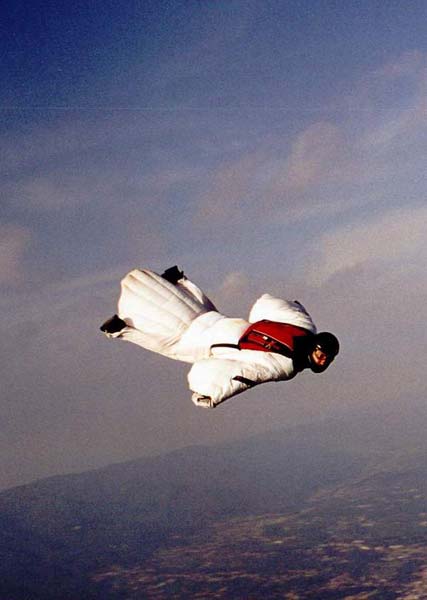
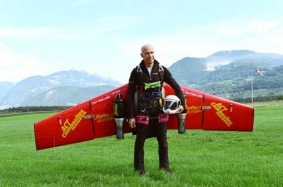
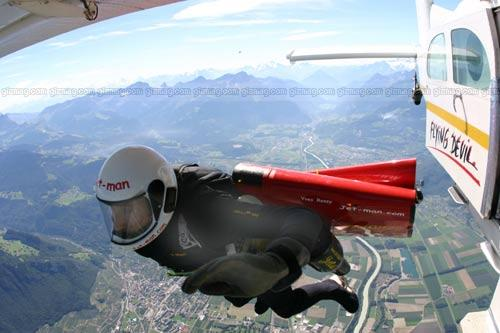
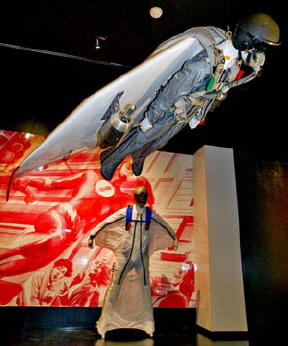
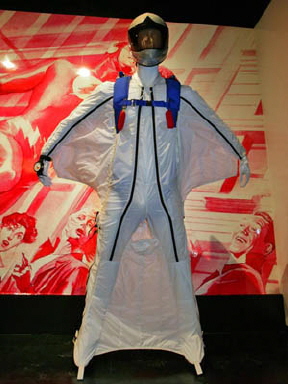
www.youngeagles.org/news/archive/2008%20-%2006_18%20-%20Here%20Comes%20EXO-Wing%20Man!.asp
Here Comes EXO-Wing Man!June 17, 2008 - There's Superman, Batman, Spiderman and Wonder Woman. But you may want to add EXO-Wing Man to the list of superheroes with one big difference. EXO-Wing, the world's smallest human-piloted jet, can make anyone fly.
Through September 1, the New York Metropolitan Museum of Art is displaying two of Atair Aerospace's inventions alongside high-profile superhero collections from Hollywood and the fashion industry. The exhibit includes Atair's EXO-Wing and AeroSuit.
The EXO-Wing is a futuristic aircraft constructed from advanced aerospace composite materials and should be available commercially in 12 months, the Chicago Tribune reported. The twin micro-turbine-powered craft is so small and lightweight that a person wears it like a backpack, and then jumps out of a plane, ignites the two engines and deploys parachutes to land.
The AeroSuit, a flexible wing suit constructed with advanced composite textiles, allows a skydiver to glide to a target miles away from the drop point. The arms and legs of this garment include inflating webbed panels that form the elements of a wing, dramatically improving the aerodynamics of a skydiver.
"We make a lot of James Bond-like toys, but what really pulls it together is it's all lifesaving technology," Daniel Preston, the 37-year-old founder and chief technical officer of Atair, told the Chicago Tribune.
In addition, the company has invented Onyx, a GPS-guided parachute system that guides the parachute and its cargo to a preprogrammed target, and its Chimera tactical vehicle, a two-seater car that can be parachuted from a plane and then driven away as a tactical ground vehicle with a ground speed of 50 mph.
Headquartered in Brooklyn, N.Y., Atair is a high-technology prime defense contractor dedicated to modernizing military and government logistics by creatively solving complex aerospace and engineering problems that integrate the state-of-the-art in parachute designs, and guidance, navigation and control systems.
BLASTS FROM THE PAST!
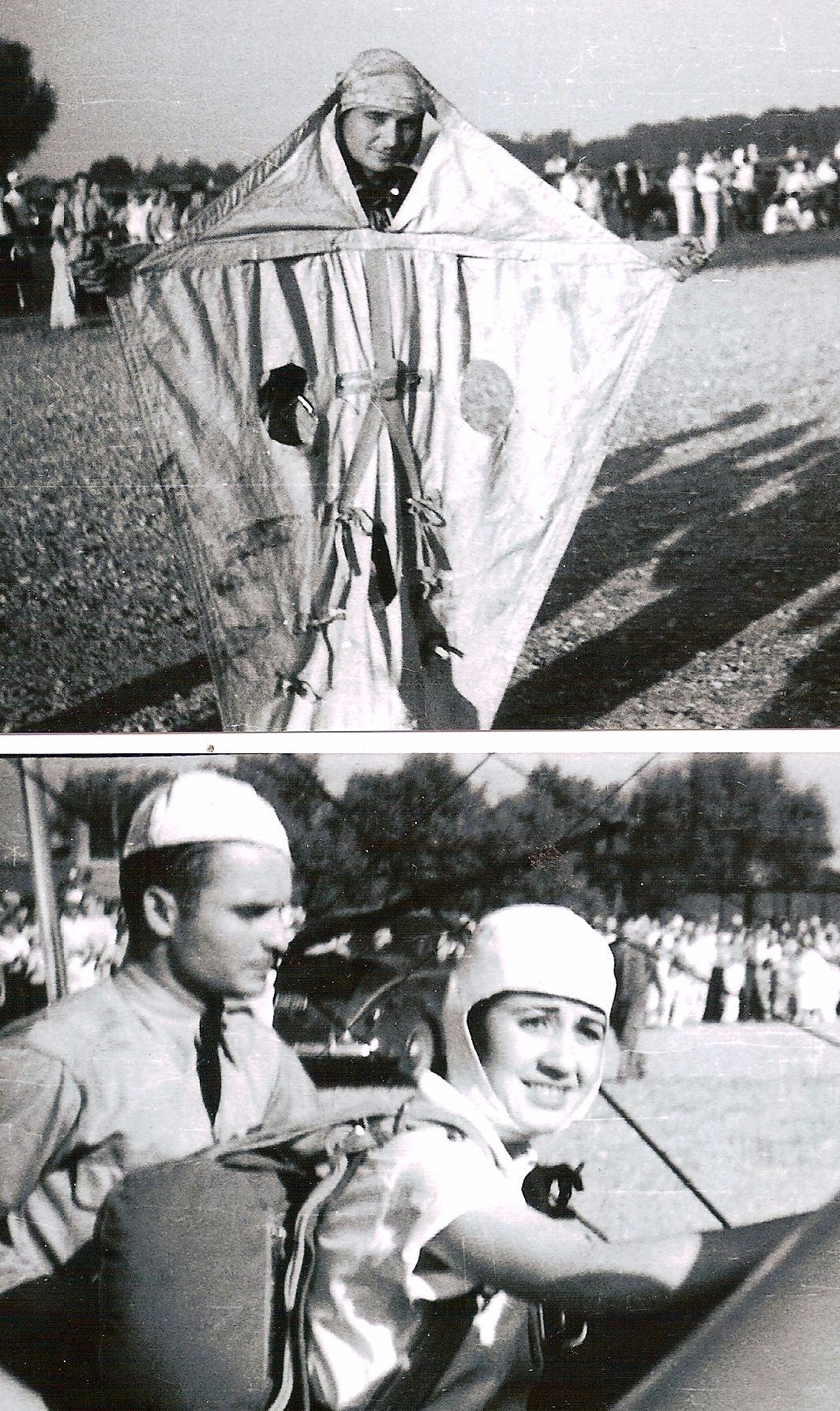
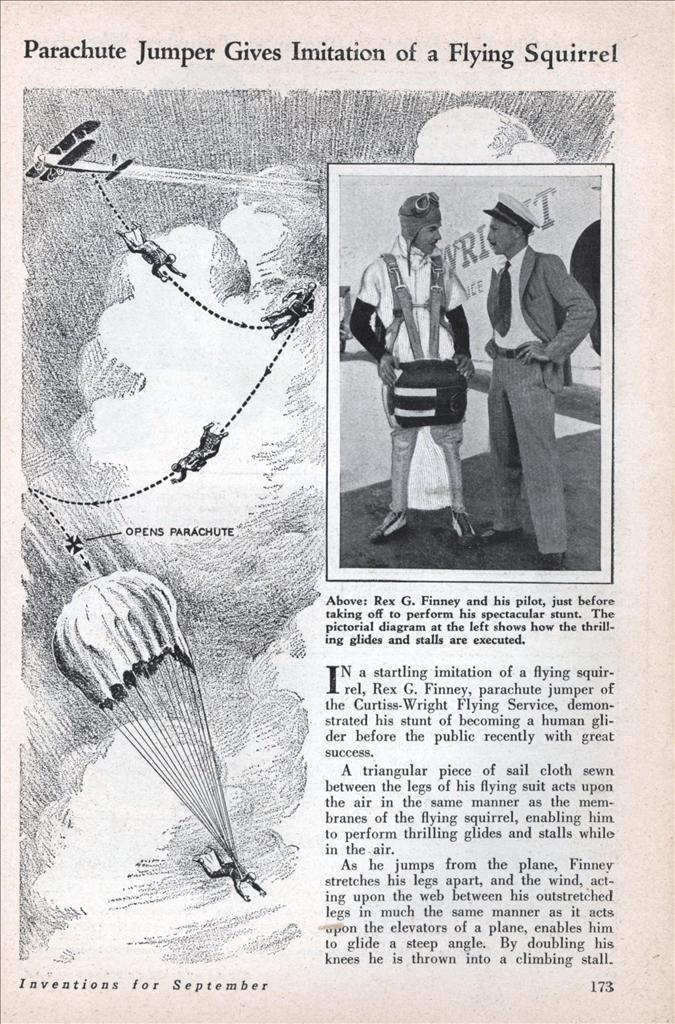
The Angelina Jolie Tomb Raider 2 movie has one excellent scene of her and her partner wing-suit gliding off a building in Hong Kong that was actually done--not phony CGI stuff.

Most military personnel are familiar with the British AV-8B Harrier II aircraft which can land and take-off vertically (V/STOL) now in limited U.S. service. A two-seat version was featured in a behind the "Iron-Curtain" agent recovery in the James Bond film, "The Living Daylights". To capitalize on this further, we are building special pressurized pods that can be fitted to its outboard wing stations that can carry 2 men apiece. The Harrier can fly above 600+ mph and can appear as part of a regular attack jet strike package before veering off to do "other missions". However, the Harrier has its limitations.
The Harrier is not "stealthy" it cannot "sneak in" anywhere that is well defended unless we destroy ADA and radars ahead of it, which alerts the enemy. Even still, the Harrier is very loud. Its thrust vectored engines along its fuselage and fuel tank make it non-survivable if hit by an enemy SAM. We lost 5 in the relatively tame Gulf War. The actual use of the Harrier has shown that it needs a take-off roll to carry a useful bomb load---thus its actually a short-take-off jet like the A-10 Thunderbolt II with vertical landing capabilities (STOVL) which is what we are shooting for in the new F-35 Joint Strike Fighter program which could be a great SOF insertion/extraction platform using GRIER pods. The Navy and mc are not smart enough to put a retractable "ski-jump" on the end of LHA/LHD amphib ships operating Harriers to maximize its payload or improve pilot safety in event of a flame-out like the British Royal Navy has done. Topping this off is the mc's refusal to be a "team player" and offer anything to USSOCOM but their arrogance. Thus, its a platform that is not likely to be effectively used to insert/extract SF teams in real world missions.
Taking inspiration though from a limited V/TOL profile, it seems highly feasible to use RAPs in conjunction with a small cruise missile jet engine instead of the current rocket packs with a mere 30 seconds of flight time to gain a 30 minute flight profile completely under jet power, and throttled down under RAP, 4-6 hours of sustained flight at 30 mph for ranges of 100-150 miles. The key capability the jet pack can provide is vertical lift from the ground to get away from a danger area, forward speed to deploy a RAP and then sustain thrust to keep the RAP at a steady speed and altitude instead of descending. Current MC-4 type RAPs have a glide ratio of 3-to-1, which while usable initially will require a bit of jet thrust to keep airborne. What needs to be done is perfect the in diving descent opening of larger para-gliding RAPs with 8-to-1 glide ratios as used by gasoline engine and propellor powered systems like "Pagojet" flown by "Fan-Man" etc. to crash in on sporting events a few years ago.
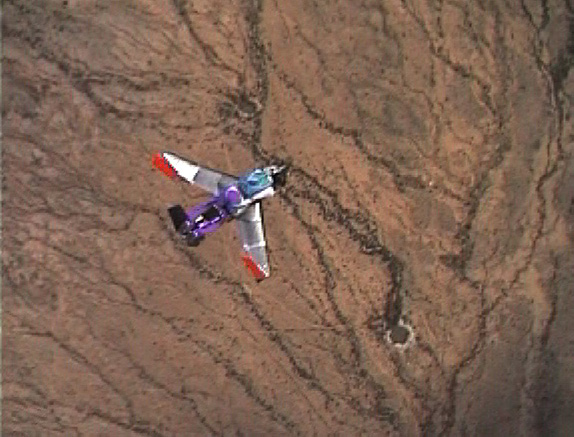
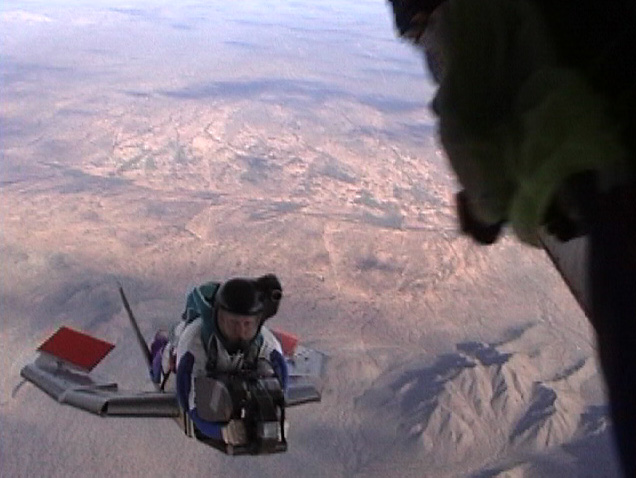
In the James Bond movie "Die Another Day" Bond and Jinx used PHASST glider sleds to extend their range for a covert entry into North Korea. The downside is they had to discard the PHASST glider sleds in order to land by parachute. If instead the small turbofan engine was already a packpack unit it would not have to be discarded and could be kept for a VERTICAL EXFILTRATION to attain enough altitude to redeploy the repack RAP to get it p[roviding the lift and then to transition the jet pack to a lesser amount of thrust to keep the RAP flying.
The RAP tandem rig (main and reserve) would be on the back of the jet pack, risers routed to the SF pilot's split-saddle leg strap harness for comfort. He can deploy the main by ripcord and jettison it with cut-away and deploy the reserve via ripcord as in any other military RAP system. His Military Free Fall (MFF) parachute skills would have to be advanced to maintain a stable face-down posture with the added weight of the jetpack. If this is too difficult, a small drogue chute like employed by tandem parachute systems (jump a passenger attached to you) could be employed to keep a stable body position until main canopy opening is desired. The Russian Airborne use the drogue chute to exit in front of jet engines to avoid use of static-lines/d-bags and allow simultaneous exit of Paratroopers from the forward fuselage area and palletized heavy drop BMD-2 Armored Fighting Vehicles out the rear ramp. This allows a closer delivery of man/machine on the drop zone.
On the ground, the SF operator/U.S. Army Soldier need only stuff his main back into its d-bag and close the container to avoid burial complications/$ of loss of the parachute. After performing his mission, he uses the jetpack to fly all the way home if under 30 minutes flight time or to deploy his reserve RAP for aerodynamic lift-assisted flight for longer ranges. The mid-air recovery of these SF operators by helicopters and MC-130 Combat Talon I aircraft with the Fulton STAR system are possibilities.
WHAT ARE THE RUSSIANS UP TO?
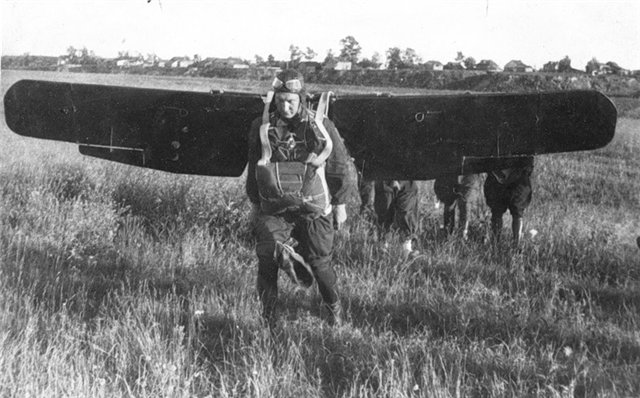
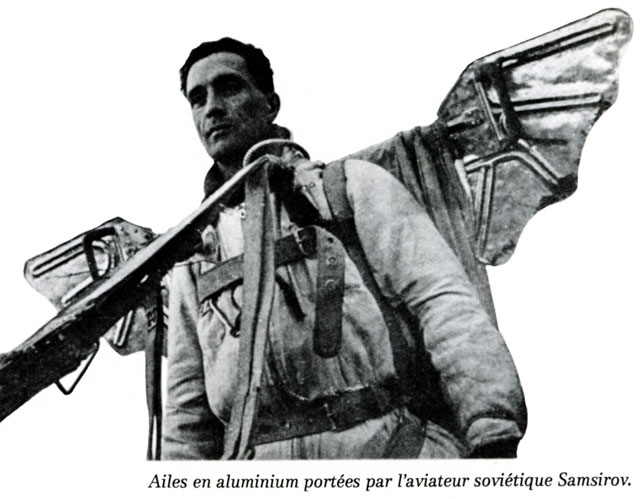
The leaders in high speed parachuting have always been the RUSSIANS. They are the ones to form the first Airborne units. What are their Spetsnaz special operating forces up to in regards to high speed parachuting?
They may already have rocket or small turbofan assisted glide parachute systems in service. Even better would be small anti-gravity belts. "Oh, wait we don't have that technology."
From Russia with Love, indeed.
 SUMMARY/CONCLUSION
SUMMARY/CONCLUSION
- Albert Einstein
The Parajet concept outlined above is feasible. Whether we can convince the "stodgy" military minds to do it is another matter. Fortunately a lot of R & D work is done by DA civilians who need not worry about their vanity, careers, and peer images and can pursue technology to the fullest. We have the technology to do this. We need to do this to break the helicopter-under-fire extraction paradigm to fully exploit the possibilities of AIRBORNE WARFARE.
Discovery Channel Rocketpack pages (videos & history)
Popular Mechanics article on the Rocket belt updated recently
Bill Suitor--the original Rocket-Man
Rocket-men you can hire to demo in your area!
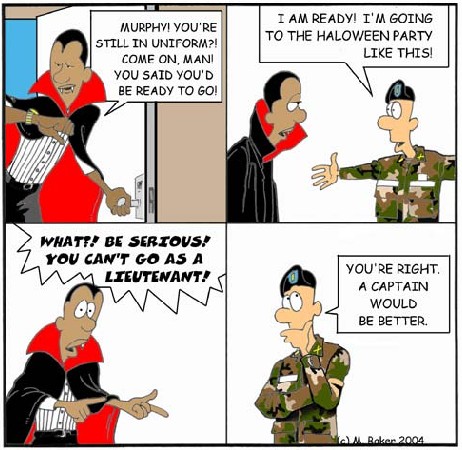
Want Pvt Murphy in your pocket?
 Return to U.S. Army Airborne Equipment Shop
Return to U.S. Army Airborne Equipment Shop
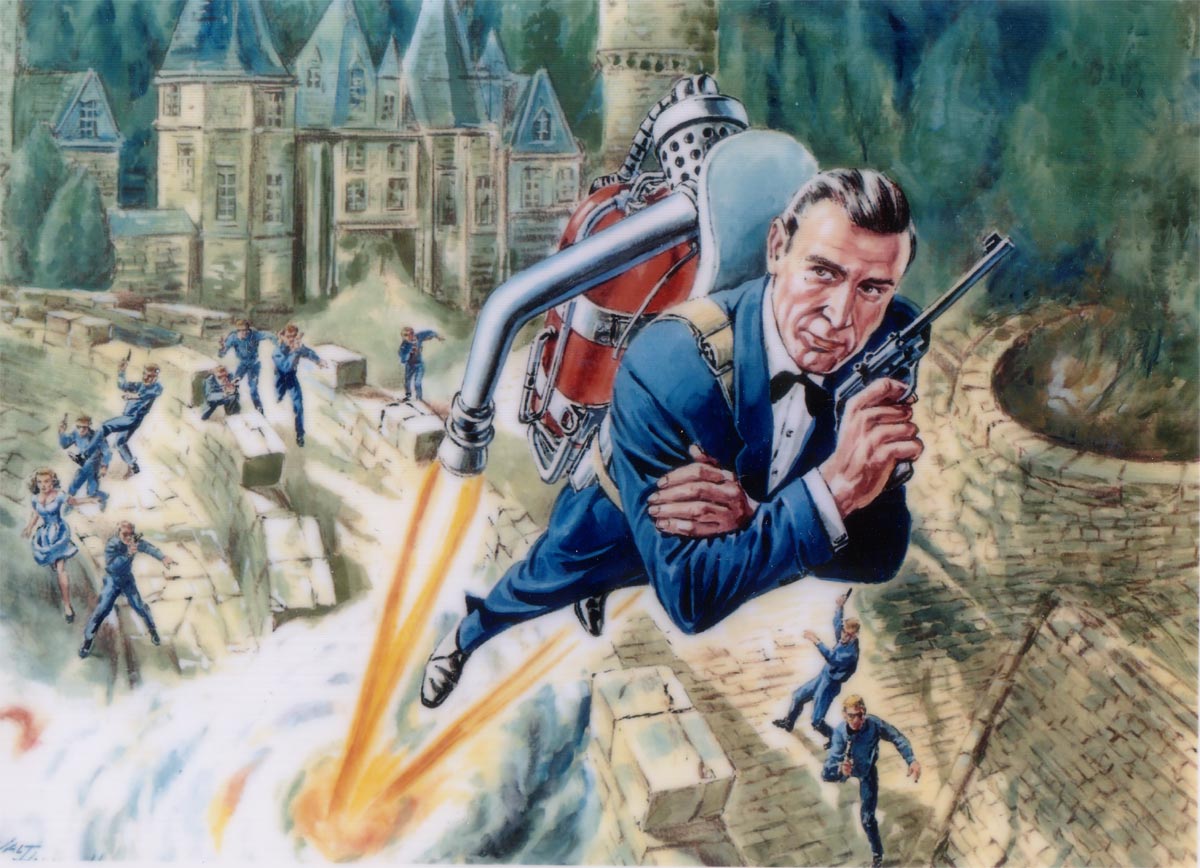
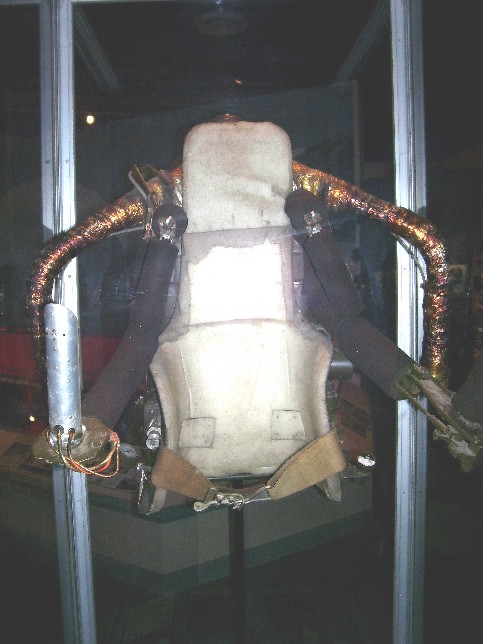
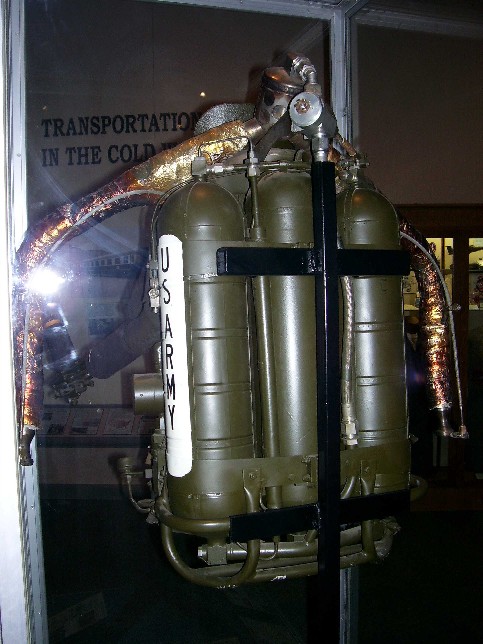

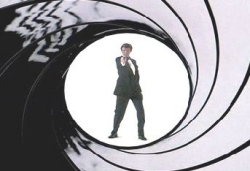 James Bond is For Real
James Bond is For Real